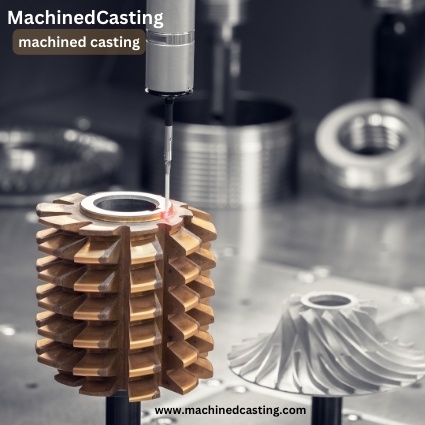Machined casting is a manufacturing process that combines the flexibility of casting with the precision of machining, offering numerous advantages in producing complex metal components. This guide aims to provide a detailed overview of machined casting, covering its process, applications, benefits, and best practices.
Understanding Machined Casting: Machined casting, also known as cast then machined (CTM), involves two primary steps: casting and machining. In the casting phase, molten metal is poured into a mold to create the desired shape. Once the casting solidifies, it undergoes machining processes such as milling, turning, drilling, and grinding to achieve tight tolerances and surface finish.
Process Overview:
- Design and Pattern Making: The process begins with designing the component and creating patterns, either using CAD software or traditional methods.
- Mold Making: The patterns are used to create molds, typically made of sand, investment, or die-cast materials.
- Casting: Molten metal is poured into the mold cavity and allowed to solidify, taking the shape of the pattern.
- Cooling and Removal: After solidification, the casting is cooled and removed from the mold.
- Machining: The casting undergoes machining operations to refine dimensions, surface finish, and tolerances according to specifications.
- Finishing: Optional finishing processes such as polishing or coating may be applied for enhanced aesthetics or functionality.
Applications: Machined casting finds applications across various industries, including automotive, aerospace, defense, medical, and machinery. Common components produced through this process include engine blocks, transmission housings, turbine blades, and structural components.
Benefits of Machined Casting:
- Design Flexibility: Machined casting allows for the production of complex shapes and intricate geometries that are difficult or impossible to achieve through traditional machining alone.
- Cost Efficiency: By combining casting and machining, manufacturers can optimize material usage, reduce waste, and minimize production time, leading to cost savings.
- Superior Mechanical Properties: Castings provide excellent strength, durability, and dimensional stability, while machining ensures precise dimensions and surface finish, resulting in high-quality components.
- Reduced Lead Time: Machined casting eliminates the need for multiple setups and processes, streamlining production and shortening lead times compared to conventional manufacturing methods.
- Scalability: Machined casting is suitable for both prototype development and high-volume production, offering scalability to meet varying demand levels.
Best Practices for Machined Casting:
- Collaborative Design: Involve casting and machining experts early in the design phase to optimize part geometry for manufacturability and performance.
- Material Selection: Choose the appropriate casting alloy based on mechanical properties, machinability, and application requirements.
- Process Optimization: Continuously refine casting and machining parameters to achieve the desired quality, efficiency, and cost-effectiveness.
- Quality Assurance: Implement rigorous inspection and testing protocols throughout the production process to ensure dimensional accuracy, surface integrity, and material properties.
- Continuous Improvement: Regularly assess and refine manufacturing processes, equipment, and techniques to enhance productivity, quality, and competitiveness.
Conclusion: Machined casting offers a powerful synergy of casting's versatility and machining's precision, making it a preferred choice for producing intricate metal components across diverse industries. By understanding the process, applications, benefits, and best practices outlined in this guide, manufacturers can leverage the full potential of machined casting to drive innovation, efficiency, and competitiveness in their operations.


No comments yet